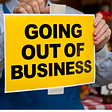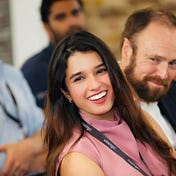Profitable from day 1: lessons from the founder of Product School
Carlos González De Villaumbrosia is the founder and CEO of Product School, the global leader in Product Management training. Founded in 2014, Carlos bootstrapped Product School for seven and a half years, before raising $25M in growth equity in 2021. Their customers include the likes of Google, Facebook, Netflix, Airbnb, PayPal, Uber and Amazon. If you’re an early stage founder looking to understand and delight your users to nail product market fit, then read on for Carlos’ brilliant insights.
By the end of this article you will learn how to:
- Conduct user testing to build a product that customers love
- Reduce bias and incentivise the right kind of user feedback
- Solve the cold start problem when building an authoritative brand
Can you give us a quick overview of the Product School journey?
I come from an engineering background and I had this realisation that I’d been building products my whole life, but I never learnt how to do that in a school setting. I wanted to build the school of my dreams; the school I wish I had had access to. Product School basically started as a solution to my own problem.
I started back in 2014 and bootstrapped it for the first seven and a half years. It has been profitable since the very beginning. Now, we have over 120 FTEs and the community is around 2 million strong, ranging from aspiring PMs all the way up to Chief Product Officers. In 2021, we announced a $25M funding round to help us accelerate the business and capitalise on the explosive growth of online education from the pandemic.
Product School was a response to a problem that you personally faced. How did you validate that there was external demand for it?
I’ve been doing an orthodox things, including user testing, my whole life. Because our business was bootstrapped for so long, we had to be extremely thoughtful about where we spent our money and we had to move quickly. There are a lot of tools, frameworks and studies for user testing, but in our case, I ran our user tests personally. The cheapest, fastest way for me to validate whether there was a real need for this was to treat myself as a product.
I started hosting free in-person 60–90 minute workshops in local coworking spaces in San Fransisco. I was attracting 50–100 people and it was a win-win. I didn’t have to pay to use the space and I was bringing them potential customers. I tested topics that I could include in a future paid product, I leveraged free websites such as meetup.com or Eventbrite, and used the coworking internal newsletters to attract people to the sessions. I led the sessions, so I didn’t need to invest money or time to attract speakers. That was how it all started.
How did you think about incentivising user feedback?
I always made sure I was giving value first. I think that’s an important piece. I gave them something that they wanted, and then in exchange I was able to ask additional questions, ‘What did you think about this workshop?’, ‘Would you pay for this?’ etc. Some people say, ‘Why not just offer Starbucks or Amazon gift cards to people through classified ads and newsletters?’. But I advise founders to be careful about doing that, because it’s important to ask these questions to the right customer. I didn’t know their willingness to pay yet, but I knew that the people that I was attracting to this workshop were potential customers. I was hosting a workshop on how to make a prototype. If you don’t care about prototypes — you’re not going to show up. If you give people gift cards, you don’t know what their real incentive is. I’m not saying don’t reward people for their time. I’m saying: pay attention to who you get feedback from.
Eventually, I started charging money for the workshops, only $5–10 bucks. I wasn’t trying to make a profit. I wanted to raise the bar for attendees because I realised that there are some people who love hanging out at these free events but would never be customers. Even though it was good for my own ego to have 50–100 people in the room, by just raising the price to $5–10, I would get 10–20 much higher quality people in the room. At that point, I was really interested in finding the right people to get insights from. The more bias you can eliminate, the more you can be sure that people are giving you feedback for the right reasons.
How do you solve your cold start problem when you’re starting out and want to build an authoritative brand?
Part of it is by starting really small and doing all the things that don’t scale. For the first two years, I literally did all the talks and taught all the classes. I wanted to ensure maximum quality. When starting out, I think the type of discovery work that is required to build something that people care about, can only come from the founder. I also couldn’t afford anything else. Even though we were profitable and I was reinvesting into the business, the business wasn’t growing that much in the early days.
The tipping point here is that you can’t do everything by yourself. If you want to build something beyond your own personal brand and create space for a platform serving a bigger number of people, at some point you need to trust your people. We all know that hiring is important, but I simultaneously spent crazy amounts of time ensuring quality. Being bootstrapped and profitable since the start, I wanted to ensure that we were raising money from our customers, not from investors. The first time I delegated teaching a cohort, I still audited that cohort. I was so nervous, sitting down like a student, taking notes, ready to jump in if the experience wasn’t good.
I was obsessed. I was able to transmit some of that obsession to people. I made some really good hires. I also made some really bad hires that I had to stop very early, because I didn’t feel that we were aligned on what quality means. Quality was so important, because we are not just teaching education and providing a good experience. We want to ensure that this makes a positive impact on people’s outcomes. The outcome of their experience with us could be getting a job or a promotion or something that helps them bridge that gap between education and employment.
Another part of it was building things that don’t generate money. I’m a big believer in building community, in giving things away and adding value first. So 90% of the things that we do at Product School are free for everybody: conferences, events, books, job boards, discussion forums, you name it. But free doesn’t mean bad quality. We invested a lot of money in these things. Before, it was literally just me answering questions on Quora, but now we have a content team, and I was constantly telling them, ‘You’re doing this for free but that doesn’t mean it’s not good quality. We need to make sure that when people read something about us, whenever they have an interaction with us, this has to mean quality and value’. It was that community-first approach and obsession around taking care of these people, even if they’re not paid customers… yet.
When we do conferences, we go for the very best speakers CPO, VP or SVP of product at Disney, Netflix, Google. I sent (and still send) cold emails like crazy. Now, the open rate is a little higher, but also I’m raising the bar with the recipient. The first ever external instructor at Product School used to run product recruiting for LinkedIn and worked directly with the founder of LinkedIn. Before that, he worked with Mark Zuckerberg at Facebook. It took me a lot of nos from a lot of people, it’s a bit like fundraising. That guy believed in me and said ‘I hire PMs and there is no good place to assess the quality […] I’m going to do it.’ And he did, for free. Think big, don’t be disappointed by rejection, and you will create momentum to inspire the next generation of leaders in your company.
What recommendations do you have for tools for collecting product insights at different stages? What do you think about building tools internally for specific use cases?
At the beginning, I would say no to tools and favour the scrappy approach. Some tools do have a free startup plan to hook you early, then when you become big and have money, you start paying. Userzoom.com is one of the largest user research platforms, but might be too big for a startup in terms of pricing. Two more startup friendly tools are Sprig.com and Usertesting.com.
But there is no replacement for finding the right people with the right incentive to have those types of conversations. Another, more scrappy way to collect product insights is to sign up for competitors’ demos and ask questions, from the user side. I remember when I was starting, I did the same with a bunch of education companies and it was really interesting to see how they thought about product.
As for building tools internally, I’m a big believer in buying versus building. There are a lot of tools out there that can get you 80% of the way. They may not be perfect or customisable. They may not cover every single use case. But maybe that’s enough to continue your journey and eventually decide if you really need to build something custom later on. That’s a classic product approach versus engineering approach
How do you balance the explore-exploit trade off when it comes to new use cases? When do you double down on a key focus versus continuing to explore other options?
My previous company was also in education. We built a marketplace that was teaching everything to everyone. It was just complicated and required a different level of capital. It didn’t make me happy. I spent way more time pitching PowerPoints to people that were never going to use my product than actually building it. With product school, we did the opposite. We decided to be the absolute best in the world in one category: product management. It’s enticing, especially as you grow, to branch out into other areas. I’m not saying that there is not a place and a time for that, but I would first question whether you really maxed out your market and exploited your superpower to a point that in order to grow, you need to expand.
Even though we’re hyper-focused on product, I still found opportunities to branch out. The first program we had was focused on aspiring PMs only. We now have three levels. Two of them are for existing PMs. But we are focused on product, and we have no problem saying that if you are not into product, then this is not for you. By saying that, I’m making sure that the only use case I have is truly loved by a small number of people. That requires patience, which is something that some investors don’t have and why I didn’t want to take that route. I’m not advocating for raising money versus not raising money. I’m just saying that I wanted to find employees that understood that we needed to have some patience to be high quality and that this wasn’t going to be an all or nothing type of game. We needed to find an investor that also understood that, and that even though we raised money, we were still going to stay profitable and focused on product. This also took us saying no or being rejected by both employees and investors. I’ve seen both models work, but I don’t want to discourage founders from just doing one thing extremely well.
As your community is now in the millions, how do you manage your community as you gain an increasing number of users?
Something I learnt from the VP of product at Reddit is the bigger you get, the smaller you want to feel. They are obsessed with subreddits, with becoming tiny and with making sure that these small groups interact and have a sense of connection. I really took that to heart. Yes, we have this vanity metric about millions of people in our community, but how many of them are active? How many of them would really care if I shut down the company?
We cannot solve that problem right now, at that scale. So we are first solving this for our paid students. All of our cohorts are up to 15 students in the room. They’re all live, with one instructor. Students get to know 14 peers who share two months with them — around 60 hours together. They’re in touch via different online channels and, if they’re in the same city, they might grab coffee together. They have a mentor that gets to know them and is there after graduation.
I hope we can get to solving this at a larger scale but I think it’s very important to not lose the magic. It’s very tempting. When you have something that kind of works, you’re thinking about ways to optimise it. I could double the size of the cohort. I could increase the price. I could use certain hacks that might get me a bump in the short term, but it would reduce the quality. And I think it’s important to keep that quality, as you try to find more creative ways to scale.
To access more practical insights from founders like Carlos, sign-up to our newsletter, here.







